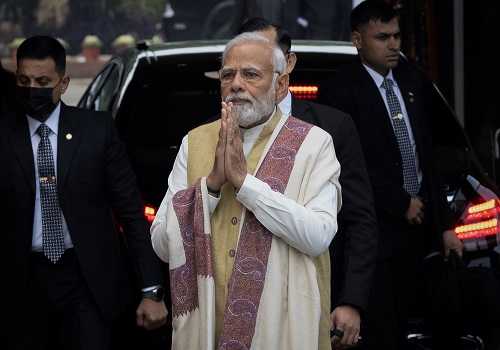India submits low emission development strategy at COP27

Follow us Now on Telegram ! Get daily 10 - 12 important updates on Business, Finance and Investment. Join our Telegram Channel
India on Monday submitted its Long-Term Low Emission Development Strategy to the United Nations Framework Convention on Climate Change (UNFCCC), during the ongoing 27th Conference of Parties (COP27), which is aimed at rational utilisation of national resources with due regard to energy security. It further says that the transitions from fossil fuels will be undertaken in a just, smooth, sustainable and all-inclusive manner.
The strategy was launched by Environment Minister Bhupender Yadav, who is leading the Indian delegation to COP27 at Egypt's Sharm El-Sheikh.
It further focuses on the increased use of biofuels, especially ethanol blending in petrol. The emission strategy also envisages maximising the use of green hydrogen fuel to drive the low carbon development of the transport sector.
"India aspires to maximise the use of electric vehicles, ethanol blending to reach 20 per cent by 2025 and a strong modal shift to public transport for passenger and freight," the emission strategy underlined.
"While urbanisation will continue as a strong trend from our current relatively low base, future sustainable and climate resilient urban development will be driven by smart city initiatives, integrated planning of cities for mainstreaming adaptation and enhancing energy and resource efficiency, effective green building codes and rapid developments in innovative solid and liquid waste management," it added.
India's low emission strategy is further focussed on improving energy efficiency by the Perform, Achieve and Trade (PAT) scheme, National Hydrogen Mission, high level of electrification in all relevant processes and activities, enhancing material efficiency and recycling leading to expansion of circular economy, and exploring options for hard-to-abate sectors, such as steel, cement, aluminium and others.
"India has a strong record of enhancing forest and tree cover in the last three decades alongside high economic growth. India's forest fire incidence is well below global levels, while its forest and tree cover are a net sink absorbing 15 per cent of CO2 emissions in 2016. India is on track to fulfilling its NDC commitment of 2.5 to 3 billion tonnes of additional carbon sequestration in forest and tree cover by 2030," the strategy further outlined.
Most significantly, the provision of climate finance by developed countries will play a very significant role and needs to be considerably enhanced, in the form of grants and concessional loans, ensuring scale, scope and speed, predominantly from public sources, in accordance with the principles of the UNFCCC, it noted.












 320-x-100_uti_gold.jpg" alt="Advertisement">
320-x-100_uti_gold.jpg" alt="Advertisement">












